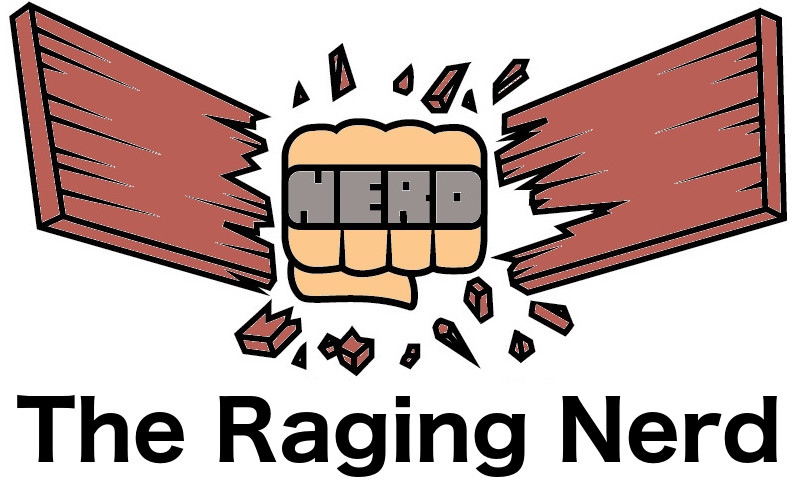Was Twisted Sister A Metal Band?
Twisted Sister is primarily known as a hair band, or hair-metal. It’s not true metal, but a kind of pop rock that was popular during the 1980s. However, they did have a few songs that were closer to true metal. While Twisted Sister primarily wrote songs that were poppy and anthemic, similar to Poison or Motley Crue, they did write a few songs that were less teased hair and leotards and more leather and spikes, more in the vein of Iron Maiden or Judas Priest than Whitesnake of Bon Jovi. So what songs were those, and what made them sound like metal?
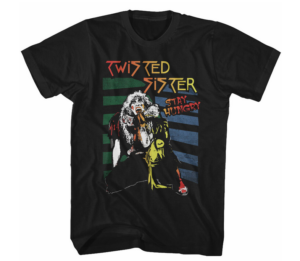 The first of their more metal tracks is Burn In Hell. The very title already sounds like a legitimate metal song rather than a hair metal bonanza, and that’s what they delivered on this track. Covered later on by no less a legendary black metal band than Dimmu Borgir, Burn In Hell begins with slow, ominous minor-key power chord riffing. The singer stays away from the higher end of his range and sings in a rough baritone: “Welcome to the abandoned lands/Come on in child, take my hand”. It’s the sort of singing that frequently accompanies heavier tracks in 80s metal. When he finally unleashes a high-pitched scream, the track kicks into overdrive, with the tempo increasing and the intensity ramping up. The chorus, a simple refrain of “You’re gonna burn in hell” serves to drive home the grim nature of the track. Interestingly, when viewed closely, the lyrics are not about Satan and death and evil at all. Rather, they’re a warning for the listener to change their ways before they “burn in hell”. Whether this is a reference to a literal Christian afterlife punishment, or a simple warning about the consequences of one’s actions, is anybody’s guess.
The first of their more metal tracks is Burn In Hell. The very title already sounds like a legitimate metal song rather than a hair metal bonanza, and that’s what they delivered on this track. Covered later on by no less a legendary black metal band than Dimmu Borgir, Burn In Hell begins with slow, ominous minor-key power chord riffing. The singer stays away from the higher end of his range and sings in a rough baritone: “Welcome to the abandoned lands/Come on in child, take my hand”. It’s the sort of singing that frequently accompanies heavier tracks in 80s metal. When he finally unleashes a high-pitched scream, the track kicks into overdrive, with the tempo increasing and the intensity ramping up. The chorus, a simple refrain of “You’re gonna burn in hell” serves to drive home the grim nature of the track. Interestingly, when viewed closely, the lyrics are not about Satan and death and evil at all. Rather, they’re a warning for the listener to change their ways before they “burn in hell”. Whether this is a reference to a literal Christian afterlife punishment, or a simple warning about the consequences of one’s actions, is anybody’s guess.
The second heavy track from Twisted Sister, which is the reason why so many metalheads still occasionally wear Twisted Sister t shirts, is Under The Blade. Under The Blade begins with fast palm mutes in a manner reminiscent of Judas Priest. The singer begins menacingly, saying, “A glint of steel, a flash of light/You know you’re not going home tonight”. At the end of the first verse, when he finally screams the word “Blade!” near the upper end of his range, the guitars go from fast low palm mutes to being ripped open by power chords higher on the fretboard. This is the sort of thing that Rob Halford would have had fun with. Amusingly, this song was highlighted by Tipper Gore as a reason to censor music and put parental advisory stickers on CDs, because she assumed that it was about lascivious, deviant practices. This is very funny, because Tipper Gore seems to have been projecting: in reality, Under The Blade is just about getting oral surgery, which is a very frightening experience, as anyone who has had their wisdom teeth out knows full well. Although it’s good that we all now know what Tipper Gore was doing on the weekends, if you get my drift.
What Does The Fallout Series Do For Us?
The Fallout games are a huge cash cow for Bethesda. For example, Fallout: New Vegas raked in more than three hundred million dollars in the first month after its release. Pause for a moment to reflect on what a tremendous sum of money that is. There are blockbuster films that never touch anywhere near that amount of money. How is it that this series has made Bethesda so much cash? What is it about Fallout that is so compelling that people just have to have it? Granted, it’s not the Elder Scrolls or the fame of Skyrim, but there’s definitely something there that people want. So what is it? What’s with all the Fallout video game shirts?
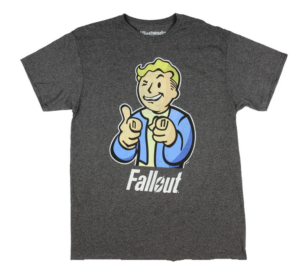 There are a few things. First of all, the post-apocalyptic genre is relatively underplayed. Yeah, there have been a few movies like Mad Max that had post-apocalyptic settings, but overall, it’s not a hugely popular genre. There are way more high fantasy and sci-fi/space opera settings than post-apocalyptic. Since it’s such an underused genre, Fallout comes across as a very original game by using a post-apocalyptic setting. Moreover, you would expect post-apocalyptic games to be either action or survival horror. Fallout, however, is decidedly a role playing game, which is unexpected and thus a fresh combination.
There are a few things. First of all, the post-apocalyptic genre is relatively underplayed. Yeah, there have been a few movies like Mad Max that had post-apocalyptic settings, but overall, it’s not a hugely popular genre. There are way more high fantasy and sci-fi/space opera settings than post-apocalyptic. Since it’s such an underused genre, Fallout comes across as a very original game by using a post-apocalyptic setting. Moreover, you would expect post-apocalyptic games to be either action or survival horror. Fallout, however, is decidedly a role playing game, which is unexpected and thus a fresh combination.
Secondly, it provides Bethesda with a series that is somewhat less cartoonish than their other games. Skyrim is an enormously popular game, but the voice acting, writing, and plot are all on the same level as you’d see in a Disney film, or perhaps slightly below that. The Fallout games just feel somehow more serious. Part of it is the superior quality of the voice acting and dialogue, as well as the writing. But another big part of it is the setting. While fantasy can be done well, it’s something that must be “sold” in order to be convincing. If we are going to take magical dragons seriously, then we have to be persuaded to do so. Post-apocalyptic settings are just easier to take seriously and lend themselves more to suspension of disbelief.
Another big issue with Fallout is the consistency of the series, which is an element that is missing from the Elder Scrolls. The Elder Scrolls was never a very consistent series. There was Arena, which was more of a beta or prototype than a series-launching game. Then we had Daggerfall, which is the first game that felt a bit like the Elder Scrolls but was still more of a historical achievement than a game that people still want to play today. The first really great ES was Morrowind, which was very different from Daggerfall. Oblivion felt like a more canned Morrowind with slightly better graphics, and Skyrim was just a straight-up action game.
Fallout, by contrast, is a very consistent series. That’s not to say that all the games are, or even feel, the same. However, they’re all clearly in the same genre and proceed along the same general lines. This is in stark contrast to the Elder Scrolls, which feel like a weird experiment with each new game. Fallout, by contrast, is a series where the gamer knows roughly what they’re going to get.
The Vulcan Salute
One of the interesting things about popular culture is that popular culture eventually just becomes culture. What starts off as a joke or a meme or a tv gag eventually finds its way into the common language. Many pop culture phenomena are ephemeral and eventually fade away. Today’s flavor of the week pop song fades away after a few months and that’s that. Maybe it gets a snippet of air play here and there. But some pop cultural phenomena endure and take on a life of their own, living far beyond the bands, franchises, and brands that gave them life.
 One of those pop cultural phenomena is the Vulcan salute. Go find a teenager who has never seen Star Trek and ask them if they recognize the hand sign with “Live long and prosper”. I’ll bet you anything that they do. That’s because Star Trek was such a good show that it wound up giving birth to many pop cultural phenomena that made it over the gap and became permanently part of our culture. One of the big contributions to the cultural lexicon from Star Trek is the Vulcan salute, a hand signal typically accompanies by the words “Live long and prosper.” You’ll see this gesture and its accompanying phrase on Star Trek t shirts.
One of those pop cultural phenomena is the Vulcan salute. Go find a teenager who has never seen Star Trek and ask them if they recognize the hand sign with “Live long and prosper”. I’ll bet you anything that they do. That’s because Star Trek was such a good show that it wound up giving birth to many pop cultural phenomena that made it over the gap and became permanently part of our culture. One of the big contributions to the cultural lexicon from Star Trek is the Vulcan salute, a hand signal typically accompanies by the words “Live long and prosper.” You’ll see this gesture and its accompanying phrase on Star Trek t shirts.
Believe it or not, the Vulcan salute was not created by the show’s writers. The writers of Star Trek did not conceive of the gesture, nor the words. Leonard Nimoy himself invented the gesture and put the words to it. Leonard Nimoy is Jewish and he based the gesture on something he saw Orthodox Rabbis doing when visiting an Orthodox synagogue as a child. He saw that they made a gesture where the ring and middle fingers were separated and the thumbs extended, and that they used this gesture when placing their hands on something to bless it. The hand position mimics the Hebrew letter “shin” which is short for one of the names of God in Hebrew. Nimoy created this gesture when he decided that the Vulcans were a race for whom the hand was very important.
The phrase “Live long and prosper,” while not sourced to any particular historical text, does have some antecedents. Various phrases in ancient Egyptian and medieval English literature have phrases that are not exactly the same as “Live long and prosper” but are fairly similar to it. “Live Long and prosper” is featured on many Star Trek t shirts.
Bizarro
One of the strangest supervillains and comics, not to mention one of the most unique entries in Superman’s rogues gallery. Many superheroes have a “doppelganger” sort of villain with whom they contend. Batman has Catwoman and Spiderman has Venom. Superman’s doppelganger nails the exact purpose of a doppelganger villain, which is to have a villain who possesses many of the hero’s strengths while simultaneously embodying everything he is not. Catwoman has Batman’s stealth, but is fickle versus Batman’s rationality. Venom has Spiderman’s powers but is brutish and destructive versus Spiderman’s soft-heartedness and Peter Parker’s modesty. Bizarro has many of the same powers as Superman, but is a hopeless troglodyte who runs directly counter to the high ideals that Superman holds. Bizarro is a villain frequently featured on Superman t shirts.
 Bizarro’s backstory changes, like all comic book characters, but there are some consistent themes. In most of the stories, he is the result of some kind of duplication experiment, such as a duplication ray. The general theme is that, whatever experiment accidentally creates him, Bizarro is an imperfect copy of Superman. He’s never quite the exact copy he’s supposed to be. This is why, whenever you see Bizarro, he seems to be stupid or speak in broken sentences. He is destructive, but in an oblivious sort of way. Very often, he seems to think that he is Superman. He doesn’t quite understand morality, either.
Bizarro’s backstory changes, like all comic book characters, but there are some consistent themes. In most of the stories, he is the result of some kind of duplication experiment, such as a duplication ray. The general theme is that, whatever experiment accidentally creates him, Bizarro is an imperfect copy of Superman. He’s never quite the exact copy he’s supposed to be. This is why, whenever you see Bizarro, he seems to be stupid or speak in broken sentences. He is destructive, but in an oblivious sort of way. Very often, he seems to think that he is Superman. He doesn’t quite understand morality, either.
And that’s another big part of his personality. Bizarro, in most incarnations, is not exactly evil. It’s more that he is immoral, because he does not understand the difference between right and wrong. In a way, Bizarro is, in fact, quite innocent. This is another part of his opposition to Superman: where Superman has a strong sense of justice and stands for certain principles, of which he is keenly aware, Bizarro has no principles at all. Bizarro doesn’t even have evil principles. He’s just amoral. He’s a bull in a China shop, not only in the sense of breaking things, but in the sense that neither Bizarro nor the bull know what they’re doing or are fully aware that they are breaking things.
Very often, especially in more recent treatments, Bizarro is dealt with relatively more gently than other villains. Superman often stops or imprisons him somehow without hurting him. Also, Bizarro frequently escapes to live on his own somewhere where nobody will bother him. In one of the earlier adaptations of his character, the duplicator ray the creates Bizarro is also used on Lois Lane. This creates a Bizarro Lois, who is immediately attracted to Bizarro. The two escape to make their own life elsewhere. This is in keeping with the strange innocence of Bizarro’s character. Because he does not know right from wrong, he implicitly does not deserve punishment or “justice” of the same kind that other villains do. Instead, Bizarro often finds himself being released or isolated in a way that protects him from the world as much as it protects the world from him.
What is Mega Man’s story?
Mega Man is a very recognizable video game character featured on many video game shirts. A lot of people know who he is even if they’ve never played any of the games. Released in the late 1980s, the first Mega Man game was revolutionary because it allowed the player to choose what order to defeat the bosses in. Each boss gave the player a new weapon to use, which would be very effective against at least one other boss. For example, an ice-themed boss might give you a weapon that works well against the fire boss. Choosing which boss to beat and in what order made the original game stand out.
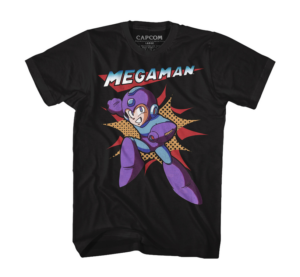 But what was the story of Mega Man? In the original game, the robot (originally known as Rock Man) was a robot created by a scientist named Dr. Light. Dr. Light had a colleague named Dr. Wiley who helped created robots. When Dr. Wiley went rogue and reprogrammed Dr. Light’s robots, one of the only ones who escaped was Rock Man, who offered to be converted into a combat robot to stop Dr. Wiley. This was a simple enough story, and Dr. Wily was the boss of the original game. He was one of those old style video game bosses that is beaten in several stages.
But what was the story of Mega Man? In the original game, the robot (originally known as Rock Man) was a robot created by a scientist named Dr. Light. Dr. Light had a colleague named Dr. Wiley who helped created robots. When Dr. Wiley went rogue and reprogrammed Dr. Light’s robots, one of the only ones who escaped was Rock Man, who offered to be converted into a combat robot to stop Dr. Wiley. This was a simple enough story, and Dr. Wily was the boss of the original game. He was one of those old style video game bosses that is beaten in several stages.
This was a short lived part of the whole mythos, though. A few years later, in 1993, the character who would come to truly define the series was created. The character’s name was X, although he is commonly also called Mega Man. X is a successor to the original Mega Man that was created and placed in suspended animation for a century before being recovered by Dr. Cain. He was originally created by Dr. Light, but Dr. Cain was the scientist who found him a century later. Ignoring Dr. Light’s warnings that were logged in the time capsule, Dr. Cain proceeded to replicate Mega Man and create many more robots like him, called Reploids.
The Reploids (replica androids) were different from their predecessors. Like Mega Man X, they had free will and could make their own decisions. Disaster struck when a certain group of them became known as “mavericks”, turning against their human masters with their newfound free will. A group of maverick hunters was created, consisting of loyal reploids who could hunt down and kill the mavericks. One such maverick hunter was called Sigma. Sigma was originally a maverick hunter, but he eventually became a maverick himself and becomes the main villain of Mega Man X. Another character is introduced, named Zero, who is like the opposite of Sigma: originally a creation of Dr. Wily, he joins the maverick hunters later on.
The plot becomes more complicated from there, of course, but the brass tacks of it have been laid out. The plot as a whole is very confusing for a newcomer to the series, so if you don’t want to sound like a fool in front of die-hard fans, this article should help you out.
Video Game Review: Streets Of Rage 3
Streets of Rage introduced the franchise to the Sega Genesis, and Streets of Rage 2 brought out the full potential of the game. Streets of Rage 3 takes its proper place as the game that realized all of the possible nuances that the game was capable of. The first game was rough, a kind of experiment. The second game was well-executed and really brought the series popularity. The third game is the mature franchise exploring all of its possibilities. Hidden characters, multiple endings based on difficulty, new special moves, and all characters having the capability to dash are just a few of the things on offer here.
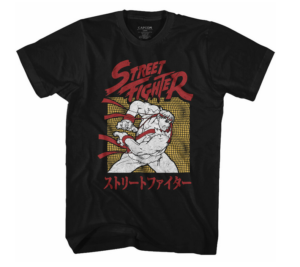 The four available characters are Axel, Blaze, Skate, and the new Dr. Zan. Axel is the all-rounder leaning toward power, while Blaze, the female fighter, is the all-rounder leaning toward speed. Skate is still the little speedy guy. Instead of the big wrestler, Max, we now get the cyborg Dr. Zan. Axel, Blaze, and Skate retain their special moves from the previous game, with some tweaks. Dr. Zan is a cyborg who can cover himself in electricity or use a far-reaching electrical cyborg arm attack. Additionally, there is a hidden character, Roo, a boxing kangaroo that can be acquired mid-game and then used when a player gets the opportunity to switch characters when using a continue.
The four available characters are Axel, Blaze, Skate, and the new Dr. Zan. Axel is the all-rounder leaning toward power, while Blaze, the female fighter, is the all-rounder leaning toward speed. Skate is still the little speedy guy. Instead of the big wrestler, Max, we now get the cyborg Dr. Zan. Axel, Blaze, and Skate retain their special moves from the previous game, with some tweaks. Dr. Zan is a cyborg who can cover himself in electricity or use a far-reaching electrical cyborg arm attack. Additionally, there is a hidden character, Roo, a boxing kangaroo that can be acquired mid-game and then used when a player gets the opportunity to switch characters when using a continue.
The game has multiple difficulties, and the player will see different endings depending on which difficulty is selected. Only players who play through at the highest difficulty will see the true ending. The mob boss, Mr. X, returns as the villain. But now he’s a brain in a vat. This is a plot twist that you only find out if you play on hard. The first encounter with Mr. X reveals that the Mr. X you’re fighting is actually a cyborg. The upper half of his body burns away at the beginning of the fight to reveal a mechanical robot.
One of the most noticeable aspects of this game is its sheer difficulty. The player must beat the game on the highest difficulty in order to see the true ending, and that is a tall order. There are enemies who wield guns; enemies who cannot be thrown; kangaroos; ninjas that can block and dodge; robots that leap and shoot projectiles. Getting to the end of Streets of Rage 3 without losing all of your lives is a very tall order indeed.
People today still wear Streets of Rage video game t shirts, and if you’ve ever played this magnificent series, you’ll know the reasons why. Of all the side-scrolling beat ‘em ups that were seen in arcades and home console collections in the 90s, Streets of Rage was one of the foremost and most enjoyable franchises of all. If you ever want to dip your feet into retro gaming, you could do a lot worse than to check out Streets of Rage and its two awesome sequels.
Video Game Review: Streets Of Rage 2
So I recently wrote a review of Streets of Rage. That game was historically important, but this is the part where the franchise really starts cookin’. In this way, it is somewhat similar to what happened with the Assassins Creed games. The original Assassins Creed was a decent enough game with a great concept but mediocre execution. The sequel, Assassins Creed II, kicked everything up a notch and really brought out the potential of the concept. Streets of Rage was a similar franchise, in that it had a lackluster first title but was then brought to a stunning execution in subsequent installments.
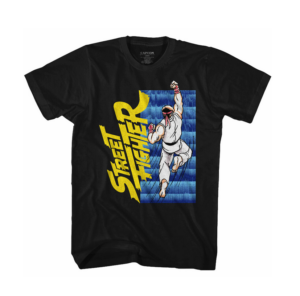 The second Streets of Rage game had a simple formula: MORE! There were more characters, more enemies, more moves, more locations, more dynamics. Instead of three characters with similar movesets and statistical differences, there are four characters: Axel, Blaze, Skate, and Max. There are levels ranging from theme parks to streets to boats. The players don’t go left to right, but go left, right, up, and down. There are also multiple weapons that can be used, which have different properties and powers. There are also different bosses, including fat guys, ninjas, samurai, thugs, sideshow freaks, and more. The game is positively bursting with variety.
The second Streets of Rage game had a simple formula: MORE! There were more characters, more enemies, more moves, more locations, more dynamics. Instead of three characters with similar movesets and statistical differences, there are four characters: Axel, Blaze, Skate, and Max. There are levels ranging from theme parks to streets to boats. The players don’t go left to right, but go left, right, up, and down. There are also multiple weapons that can be used, which have different properties and powers. There are also different bosses, including fat guys, ninjas, samurai, thugs, sideshow freaks, and more. The game is positively bursting with variety.
The characters are also all very different. Axel and Blaze are the all-rounders, with Axel leaning more toward power and Blaze leaning toward speed. Axel has the Dragon Punch special move that hits everyone around him with a flaming fist. Blaze can do a flip that hits enemies in all directions. Skate, a smaller character with less power but having the ability to dash, and spin on his head and lash out in all direction with his roller skates. Max, the big slow wrestler, can spin around and hit enemies in all directions with his fists. Special moves are powerful but consume a small amount of health.
In addition to ordinary special attacks, each character also has a “directed” special attack, and these can involve repeated uppercuts (Axel), energy projection (Blaze), a flying corkscrew kick (Skate) and a rolling tackle (Max). And this is without getting into the various knives, pipes, bats, and grenades that characters can pick up along the way. Powerups include extra lives, coins that grant a higher score, apples and turkeys that restore health.
In the final analysis, Streets of Rage 2 is a real gem of the beat ‘em up genre. With its multifarious locations, characters, special moves, weapons, powerups, fighting styles, and more, Streets of Rage 2 took the whole beat ‘em up genre to the next level. With this game, beat ‘em ups went from being a quarter sink at the local laundromat to being an immersive, varied, and endlessly entertaining gameplay experience. One way that you can tell when a videogame is becoming very compelling is when gamers become attached to the characters. Streets of Rage 2 was where the characters, especially Blaze and Axel, acquired a following and became icons among gamers. Decades later, everyone remembers Axel’s cry of “Grand upper!” and Blaze’s memorable game sprite, which can still be found on video game t shirts.
Video Game Review: Streets Of Rage
If you were a gamer of any stripe during the early 90s, you knew all about Streets of Rage. One of the most famous examples of the beat ‘em up genre, Streets of Rage allows you to pick from one of three characters: Adam, Axel, and Blaze. The characters are all very similar and possess the same movesets. What differentiates them are the character sprites, which look very different, and their stats. Adam has high power and jumps high, but is slower. Axel has high power and is fast, but does not jump very high. Blaze, the female, has high speed and jumps well, but has lower power. The game can be played with one or two players.
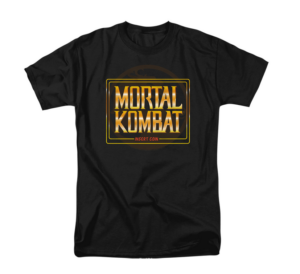 While the characters do not have unique styles or super moves (this comes later in the series), they do have something resembling a super move. If the special button is pressed, the camera will shift backward to reveal a police car. The police car will pull up and a policeman will pop out of it with either a bazooka or gatling gun. The policeman fires the weapon. Then the camera shifts back to the battlefield, where fire will rain down and destroy or greatly damage all enemies on screen. Each level, the player begins with one “special” use to call the police officers.
While the characters do not have unique styles or super moves (this comes later in the series), they do have something resembling a super move. If the special button is pressed, the camera will shift backward to reveal a police car. The police car will pull up and a policeman will pop out of it with either a bazooka or gatling gun. The policeman fires the weapon. Then the camera shifts back to the battlefield, where fire will rain down and destroy or greatly damage all enemies on screen. Each level, the player begins with one “special” use to call the police officers.
This is a very strange mechanic, but not totally unheard of in beat ‘em up games. For example, in Spider Man & Venom: Separation Anxiety, both the players can call superheroes from the Marvel Comics Universe to come attack all opponents onscreen. So the use of “summons” or “calls” during beat ‘em up games does have a history outside of Streets Of Rage. Later installments in this franchise would delete the “call” move in favor of special moves unique to each characters, and even give multiple specials to different characters. However, the call mechanic, as discussed earlier, would go on to crop up in other side scrolling beat ‘em ups later on in the 90s.
The game is fairly short and ends when the players defeat a gun-wielding mob boss named Mr. X. Mr. X is the antagonist of all three of the original Streets of Rage games. He wields a tommy gun and is portrayed as the boss of the criminal syndicate that sends out all of the goons that the players encounter.
Streets Of Rage is not the best beat ‘em up game from the 90s, but its two sequels were some of the greatest beat ‘em up games ever made. Streets Of Rage is therefore very important historically because it marks the beginning of the one of the most successful (and playable!) beat ‘em up franchises. Check it out for its historical importance and not-too-shabby gameplay, but keep in mind that Streets of Rage 2 and Streets of Rage 3 are the real crown jewels of this franchise, and the ones whose cover art frequently appear on video game t shirts.
Bruce Lee and Jeet Kune Do
Bruce Lee designed his famous Jeet Kune Do martial art as more a philosophy or set of guiding principles than an actual system. To understand what he was doing and why, you have to understand how he thought about martial arts and his philosophy more generally.
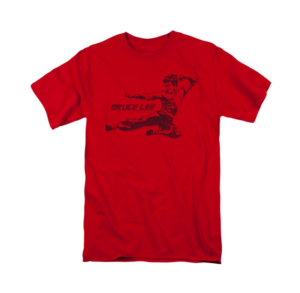 Bruce Lee thought that all thinking was ultimately a form of self-expression. Once you got rid of all the patterns, all of the frameworks, you were left with nothing but “yourself.” For example, if you begin by learning certain martial arts techniques, and then begin to modify them to make them easier to use, then you will eventually create something that is unique to you. If you follow the path of most efficiency long enough, then the martial arts you practice will eventually come to reflect your own specific, unique physical style. Thus, the best martial artist always practices a totally unique art.
Bruce Lee thought that all thinking was ultimately a form of self-expression. Once you got rid of all the patterns, all of the frameworks, you were left with nothing but “yourself.” For example, if you begin by learning certain martial arts techniques, and then begin to modify them to make them easier to use, then you will eventually create something that is unique to you. If you follow the path of most efficiency long enough, then the martial arts you practice will eventually come to reflect your own specific, unique physical style. Thus, the best martial artist always practices a totally unique art.
One of his favorite metaphors was that of water. Water, being a liquid, always takes on the shape of the vessel into which it is poured. If you pour water into a kettle, the water takes on the shape of the kettle. If you pour water into a vase, then the water takes on the shape of the vase. If you pour water into a glass, then the water takes on the shape of the glass. In every case, the water takes on the shape of the vessel into which it is poured. This metaphor applies both to the martial artist himself and to his art. The martial artist is like water in that he adapts seamlessly to each new situation by effortlessly fulfilling the new demands. In a real-life street defense situation, the martial artist would use improvised weapons or hide behind obstacles in a totally fluid and adaptable manner. Additionally, Jeet Kune Do itself adapts to the body of the martial artist, who makes the art his own by modifying techniques and improvising until he has developed his own personalized version of the martial art.
While it does not have techniques or patterns, however, Jeet Kune Do does have “guiding principles” that can be used to achieve better results. The highest kind of attack in Jeet Kune Do is known as a stop hit, or an attack that intercepts the opponent before they can land a blow. The idea is that, when an opponent goes to attack you, they will always give away or telegraph their attack, and this provides you an opportunity to intercept them. This same idea of interception is used both in the form of kung fu known as Wing Chun, and also in certain kinds of Western fencing.
The second highest kind of attack in Jeet Kune Do is to block an attack and counter at the same time. This technique is also used in the Israeli martial art, Krav Maga, where it is known as “bursting.” The very lowest kind of attack in Jeet Kune Do is to block or slip the opponent’s attack, and then counterattack in sequence. So Jeet Kune Do, which literally means “intercepting fist”, is based on the principle of having the upper hand at all times, by ranking attacks in a certain way.
Bruce Lee And Bodybuilding
 Bruce Lee is renowned as a martial artist. But one thing that a lot of people don’t know is how admired he is by professional bodybuilders. Despite being small and thin, weighing in at only about 140lbs for most of his life, Bruce Lee is well-known to bodybuilders as one of the most defined physiques to have ever been displayed by a celebrity. Joe Weider, the founder of the Mr. Olympia bodybuilding competition, described Bruce Lee as having “The most defined body I’ve ever seen!” Additionally, many professional bodybuilders have cited Bruce Lee as an influence. There’s a reason that his legacy extends beyond kung fu movies, and there’s a reason that people still wear Bruce Lee t shirts today.
Bruce Lee is renowned as a martial artist. But one thing that a lot of people don’t know is how admired he is by professional bodybuilders. Despite being small and thin, weighing in at only about 140lbs for most of his life, Bruce Lee is well-known to bodybuilders as one of the most defined physiques to have ever been displayed by a celebrity. Joe Weider, the founder of the Mr. Olympia bodybuilding competition, described Bruce Lee as having “The most defined body I’ve ever seen!” Additionally, many professional bodybuilders have cited Bruce Lee as an influence. There’s a reason that his legacy extends beyond kung fu movies, and there’s a reason that people still wear Bruce Lee t shirts today.
Bruce Lee was known for emphasizing physical fitness. He thought that most martial artists were too focused on developing technique. While he did value the technical side of martial arts, Lee felt that a martial artist, to be roundly effective, should focus on training their bodies as much as their technique. He was known for being extraordinarily fit and even had several exercise machines designed and built to his own custom specifications. He was a very accomplished athlete and had very specific training goals that could only be met by custom machines.
While the film Enter The Dragon was being created, Bruce Lee was choreographing some fight scenes. He did this live on set. The director’s wife, Ann Clouse, was observing Lee and admiring his physique (he was shirtless at the time). Eventually, she approached him between takes and asked to feel his bicep. When he allowed her to do so, she exclaimed, “It’s like feeling warm marble!”
Bruce Lee was not, however, a person with a bodybuilding ethic. While bodybuilders admired him greatly, bodybuilders are people who build muscle primarily for show. Bruce Lee didn’t build muscle for show. Instead, he built muscle for function. His goals were speed, strength, flexibility, and the ability to fight. He wasn’t interested in just looking good. In fact, he wasn’t interested in looks at all!
Take a moment to appreciate that. Bruce Lee’s physique was basically a byproduct of his training process. He was first and foremost an athlete who was interested in fitness. And yet, bodybuilders, whose entire careers revolve around making their bodies look good, are impressed with his appearance. That means that Lee’s dedication to athleticism was so great that he could build a bodybuilder-esque physique from sheer athleticism. Bodybuilders build themselves to look good, but Bruce Lee looked better than any bodybuilder just through athletic training. Bruce Lee was a freak athlete and one of the most physically gifted people to ever live.
